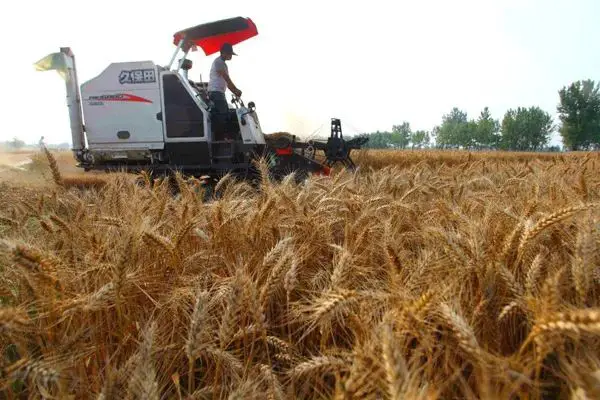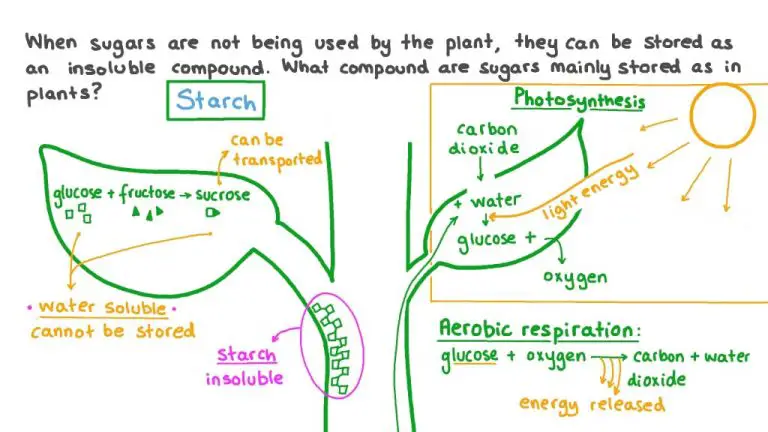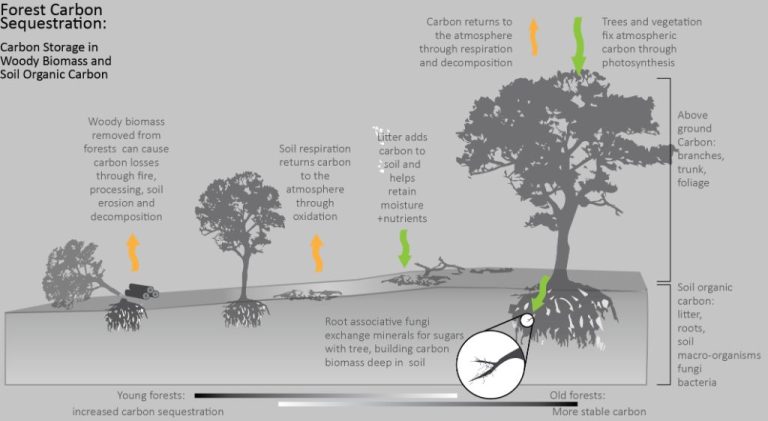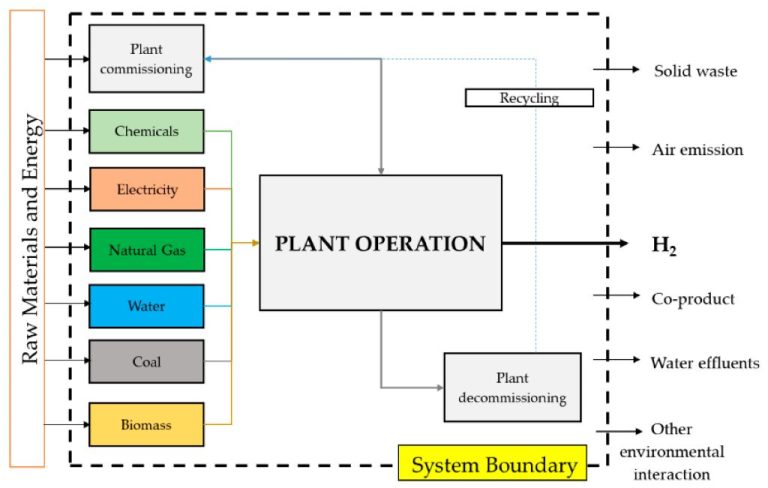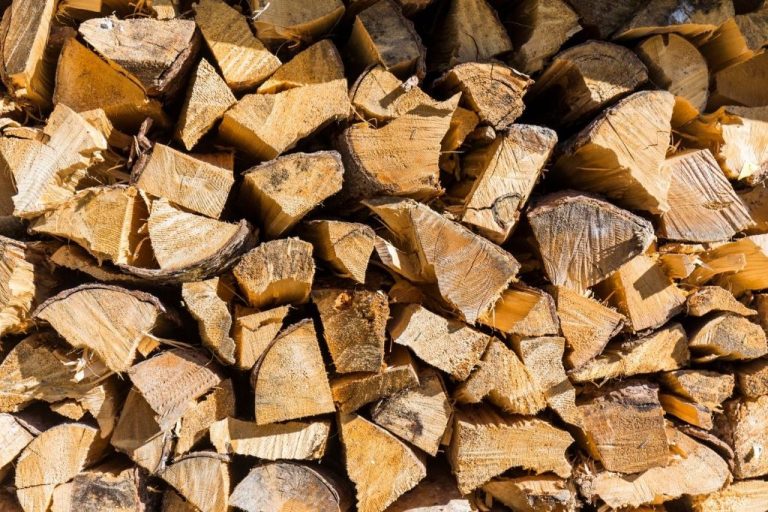What Is Biomass In Simple Words?
What is Biomass?
Biomass is organic material that comes from plants and animals. It is a renewable energy source, meaning we can produce it as quickly as we use it. The most common types of biomass include:
- Wood and wood processing waste – sawdust, timber slash, wood chips, bark, lumber mill scrap
- Agricultural waste – corn husks, corn cobs, cocoa shells, coconut shells, rice husks
- Food waste – spoiled food, restaurant grease, fruit peels, grain hulls, grape pomace from wine making
- Animal waste/manure – cow dung, chicken litter, pig waste
- Aquatic plants – algae, seaweed
- Grasses – switchgrass, Miscanthus grass
- Municipal solid waste – paper, cardboard, yard trimmings, mixed plastics
Biomass gets its energy from the sun. Through the process of photosynthesis, chlorophyll in plants captures the sun’s energy and converts it into chemical energy stored in the plant material. Biomass contains stored energy from the sun. When we burn biomass, we release the solar energy captured by the plants which can be used as heat, electricity, and fuel.
Examples of Biomass
Biomass consists of any organic material from plants, trees, agricultural crops, wood and wood waste, aquatic plants, animal waste, food waste and landfill gas. Some of the most common examples of biomass include:
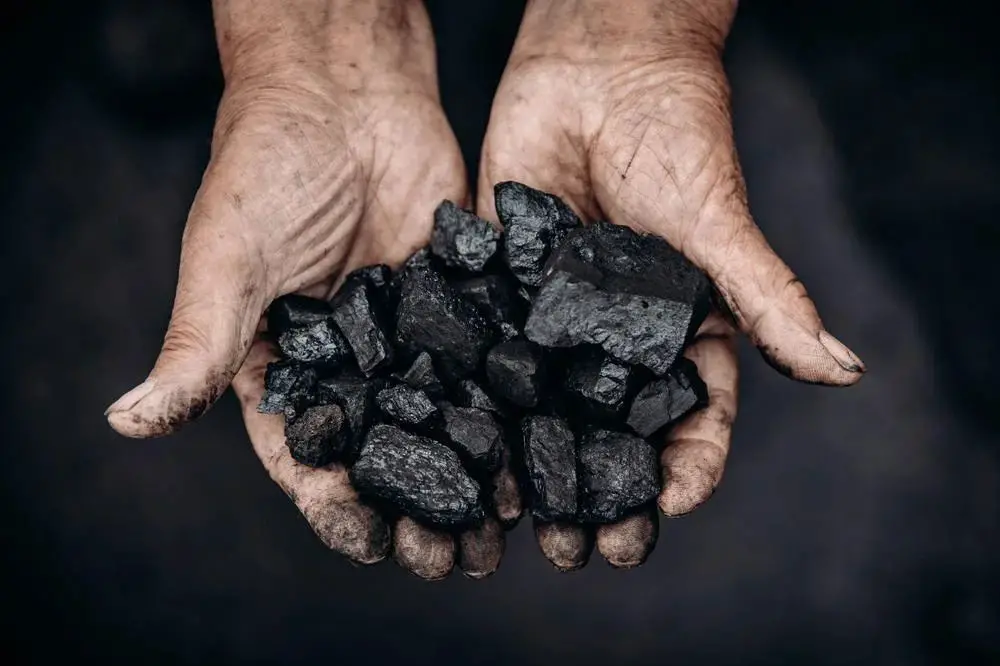
Plants and trees – This includes crops like corn, sugarcane, and soybeans that can be processed into liquid biofuels. It also includes non-food plants like switchgrass and jatropha that are grown specifically for energy production.
Agricultural crops and waste – Crop residues like corn stover (leaves, stalks), wheat straw, and bagasse (sugar cane waste) can be burned directly or converted into biofuels. Animal manure can also be converted into biogas through anaerobic digestion.
Wood and wood waste – Wood from forestry operations, sawmills, furniture manufacturers can be burned to produce heat and electricity. Waste wood can also be converted into wood chips or pellets for fuel.
Aquatic plants – Algae and other water plants can be processed into biofuels through techniques like pyrolysis and gasification.
Animal waste – Manure from livestock operations and poultry farms can be converted into biogas in digesters or used as a soil amendment.
Food waste and landfill gas – Decaying organic matter in landfills produces methane gas that can be captured and burned for energy production.
Advantages of Using Biomass
Using biomass as an energy source has several key advantages:
Biomass is a renewable and sustainable resource. As long as plants are replanted as fast as they are used, biomass supplies can be maintained indefinitely. This makes biomass very different from fossil fuels like oil, gas and coal, which take millions of years to form and are not considered renewable.
Using biomass can reduce dependence on fossil fuels. Since biomass can replace fossil fuels for many heating, electricity generation and transportation fuel needs, increased biomass usage can decrease fossil fuel usage. This helps conserve remaining fossil fuel supplies.
Biomass usage can reduce landfill waste. Many types of biomass that are candidates for energy usage, such as yard waste, food scraps and wood waste, are disposed of in landfills. Diverting these materials to make useful biomass-based energy products reduces waste volumes.
Biomass can be used to create electricity, heat, and fuel. There are multiple ways to convert biomass into useful energy forms. Electricity can be generated by burning biomass or using biomass to produce steam. Biomass can be used in home heating applications instead of oil or natural gas. And various biofuels can be produced from biomass feedstocks.
Disadvantages of Biomass
While biomass offers some advantages as an energy source, it also comes with some drawbacks that should be considered:
Requires Large Amounts of Land and Resources
The farming and harvesting of plants and trees used for biomass requires significant amounts of land, water, and other resources. In some cases, large monoculture farms are created that can negatively impact biodiversity and food production capacity.
Not Always Carbon Neutral
Though biomass is often touted as a carbon neutral energy source, some experts argue that the large-scale removal and burning of plants and trees releases carbon stored in them, resulting in a net increase in carbon emissions. More study is needed to fully understand biomass’s carbon impacts.
Air Pollution Concerns
The direct burning of biomass, especially when not done efficiently or cleanly, can contribute to air pollution in the form of carbon monoxide, nitrogen oxides, particulates, and other hazardous compounds. This can have health impacts locally.
Biomass Conversion Methods
There are several methods used to convert biomass into useful energy forms like heat, electricity, and fuel. The main biomass conversion methods are:
Direct Burning
Direct burning involves simply burning raw biomass directly to produce heat and sometimes electricity. This is done by burning biomass fuels like wood chips, agricultural residues, and municipal solid waste in boilers or furnaces to generate steam. The steam can then be used to produce electricity via a steam turbine. Direct burning is simple and widely used for heating and power generation.
Thermal Conversion
Thermal conversion methods like gasification and pyrolysis heat biomass at high temperatures without combustion, converting it into gaseous or liquid fuels. In gasification, biomass is heated with some oxygen to produce syngas, a gaseous mixture of hydrogen, carbon monoxide and other compounds. In pyrolysis, biomass is heated without oxygen to produce bio-oil. The resulting biofuels can be used for heating, power generation and transportation.
Chemical Conversion
Chemical conversion methods like anaerobic digestion and fermentation use microorganisms and enzymes to break down biomass. Anaerobic digestion uses bacteria in an oxygen-free environment to produce biogas containing methane and carbon dioxide. Fermentation uses enzymes to break down biomass into alcohols like ethanol, which can be used as liquid transportation fuels.
Mechanical Extraction
Mechanical extraction uses physical means to extract oils from oil crops like soybeans, canola and algae. The crops are crushed and the oils are mechanically pressed out. The extracted oils, known as biodiesels, can be used as renewable diesel fuel.
Using Biomass for Electricity
The most common use of biomass today is burning it to generate electricity. There are a couple ways this can be accomplished:
Direct Combustion – Biomass like wood chips, agricultural waste, or garbage can be burned directly to produce steam. This steam turns a turbine that generates electricity. This is a simple, efficient way to convert biomass to energy.
Gasification – Biomass is heated in an oxygen-starved environment to produce synthesis gas (syngas). Syngas is primarily carbon monoxide and hydrogen. This gas can then be burned to drive a gas turbine and produce electricity.
Examples of biomass power plants using these methods include:
- We Energies’ 50 MW Domtar Biomass Power Plant in Wisconsin – Burns wood waste to generate electricity
- Dallas Clean Energy McCommas Bluff Power Station – Gasifies waste wood and tires for electricity production
- RWE’s 100 MW Tilbury Power Station in the UK – Uses straw as fuel for electricity and heat
Converting biomass to electricity provides a renewable, low carbon alternative to burning fossil fuels. It allows us to generate energy from waste materials and crops.
Using Biomass for Fuel
Biomass can be converted into liquid biofuels like ethanol and biodiesel that can power vehicles and equipment. The two main methods used are fermentation and transesterification.
Ethanol is produced from biomass through fermentation. Starch crops like corn or sugars from sugar cane are broken down by yeast or bacteria to produce ethanol. Biodiesel is made through a process called transesterification, where oils like soybean oil or animal fats are reacted with alcohol to produce biodiesel.
Biofuels have some benefits compared to fossil fuels. They can have lower greenhouse gas emissions if proper land use practices are followed. Biofuels are renewable and can be produced domestically, reducing reliance on imported petroleum. However, they also have some drawbacks. Converting food crops like corn into fuels can increase food prices. Large monoculture farms for biofuel production can negatively impact biodiversity and ecosystem health. Overall, biofuels represent one option for utilizing biomass as an energy resource.
Using Biomass for Heat
Biomass can be used directly for heating and cooking in homes and businesses. Burning wood logs or wood pellets in stoves or furnaces is a traditional use of biomass that takes advantage of the heat produced when biomass is combusted. Modern wood stoves and pellet stoves are very efficient at utilizing the heat from wood fuel for space heating and water heating.
Biomass can also be used for combined heat and power (CHP) systems, also known as cogeneration. In CHP systems, biomass is burned to produce electricity while also harnessing the resulting waste heat for water or space heating purposes. This allows more of the energy to be utilized instead of wasted.
On a larger scale, biomass can provide district heating by burning biomass in a centralized location and distributing the heat to surrounding buildings. Hot water pipes run underground, connecting the buildings to the district heating plant. Denmark and Sweden have extensive district heating systems powered by biomass that provide heat to a large portion of buildings.
Future of Biomass
Biomass is expected to continue growing as an energy source, but will likely remain just a small part of the overall global energy mix for the foreseeable future. However, biomass does have the potential to provide a greater portion of renewable energy in the coming decades with the right policies and investments in place. New technologies are also being developed that can improve the efficiency of biomass production and conversion, further increasing its viability.
Several key factors will play a role in expanding the use of biomass energy worldwide:
- Increasing demand for renewable energy sources
- Declining costs as conversion technologies improve
- Government incentives and mandates supporting bioenergy
- More efficient crops and processes for growing biomass
While there are limits on the total share of energy that can come from biomass, it has the potential to provide a much greater proportion of energy needs than it currently does. With the right policies and incentives, biomass could help significantly reduce fossil fuel usage across electricity, heating, and transportation. Continued technology improvements and cost declines will further aid the expansion of biomass energy globally.
Conclusion
Biomass is renewable organic material from living or recently living plants and trees. It includes wood, agricultural waste, sugar crops, and algae. Biomass is an alternative energy source to fossil fuels that reduces greenhouse gas emissions and our dependence on non-renewable energy sources.
The main advantages of biomass are that it is renewable, sustainable, and widely available. It can be converted into electricity, fuels like ethanol and biodiesel, and heat for homes and businesses. Key disadvantages are low energy density compared to fossil fuels, high transportation costs, and air pollution from burning some types of biomass.
Methods to convert biomass into useable energy include direct combustion, thermal conversion, anaerobic digestion, and fermentation. Biomass power plants generate electricity to power homes and businesses. Converting biomass to liquid fuels can be used to power vehicles and machinery. Biomass can also provide heat via district heating systems and residential wood pellet boilers.
As we move to reduce fossil fuel use and carbon emissions, biomass will play an increasing role in the global energy mix. With sustainable sourcing and management, biomass can provide a renewable, low carbon substitute for coal, oil and natural gas.

